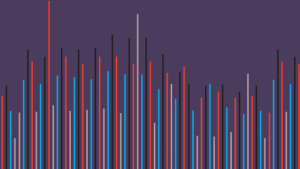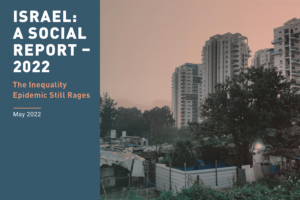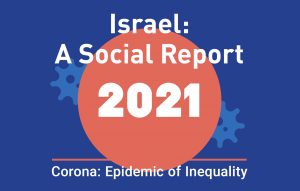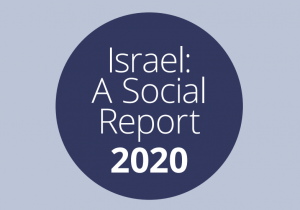The report presents figures for some of the main aspects of inequality in Israel
This issue of Israel: A Social Report comes out on the eve of national elections. In such times, one might expect a lively public debate on the desired public policy goals. Unfortunately, this is not the case. The arguments between the various political parties devote very little time to policy questions in general and socio-economic policy in particular.
The report presents figures for some of the main aspects of inequality in Israel. As such, it also points to some desired socio-economic goals: inclusive economic development that involves all areas of the country and all segments of the population, expansion of the middle class, a significant decrease in poverty, a broadening of access to higher education, the development of a public housing option that is both universal and long-term, and public financing of all health services considered normative, eliminating the need for private health insurance for essential services.
Following are some of the main findings:
1. Household Income
Households have four sources of income: work, capital, social security and assistance transfers, and pensions.
The share of income from work grew between 2000 and 2017 on average in all of the first seven income deciles, and mainly in the two lowest: in the bottom decile it increased from 31.7% to 52.3% and in the second from the bottom decile – from 47.9% to 60.0%. This increase, although it reflects moderate pay increases – like the rise in the minimum wage and the work credit, along with other programs designed to encourage employment, it is mainly the result of an increase in the number of wage earners in these income deciles. Between 2000 and 2017, the number of wage earners in the bottom decile grew by 65%, and in the next to the bottom, by 56%; in the third decile by 54% and in the fourth by 43%.
In contrast, significant income from capital is reported mainly in the top income decile. In 2017, such income constituted 6.6% of the total income of households in the top decile, an increase over 2016 (5.5%), but a decrease in comparison with 2015, when it was 10.9%. A good proportion of such income derives from housing rents. In 2017, the top income decile took in 44% of total rents in Israel.
Regarding income from social security and other transfers, in 2017 these amounted to half of the income of households in the bottom decile, 37% of the next to bottom decile and about one-fourth of the income of households in the third decile. Over the last two decades, household income from transfers in the bottom two deciles decreased considerably, following large cuts made in the wake of the financial crisis brought on by the second intifadah. The main losers were the bottom six income deciles. In the bottom decile, for example, income from transfers decreased from 66.6% to 45.8% of total income, and for the second to the bottom income decile, from 50.4% to 37.2% of total income. Another factor contributing to the increase in the number of wage earners was the 2004 change in the age of entitlement to old age and work pensions, from 60 to 62 for women and from 65 to 67 for men.
Although the increase in the number of wage earners added to household income, the increment was not large enough to create a significant change in the income ladder. Many of the new wage earners got jobs with low wages or part-time work, in service sectors like sales, food service, care work, security work and the like. A high rate of poverty was found in industries like construction (22.5%) and transportation (12.2%)
In 2017, the average gross monthly income from all four sources of income for households headed by employed persons in the top income decile was NIS 60,484 — 12 times that of the average gross monthly income of households in the bottom decile – NIS 5,079.
Households in the top two income deciles received, together, 43.3% of the total household income of households headed by employed persons. The remaining eight deciles received, together, 56.7%. This proportion has hardly changed over the last decade.
2. Wages of Top Executives
In 2017, the compensation of CEOs and top executives in large corporations decreased in comparison with 2016. The most significant decrease was in the element of salary, while bonuses, stock options and “other” payments remained quite stable. Part of the decrease may stem from the law limiting the salaries of senior management in the financial sector that came into effect in October 2016.
Still, the compensation of managers of the large corporations was very high. CEOs in the 100 largest corporations traded on the Tel Aviv Stock Exchange received, on average, the annual sum of NIS 4.45 million, or NIS 371,000 per month – 36 times the average wage.
3. Gender Pay Gaps
Between 2000 and 2016, the proportion of women earning more than the average wage grew from 18.6% to 26.8%, while for men the increase was from 37.7% to 46%.
Despite this lessening of the gender gap, Israel still finds itself in an unflattering position amongst OECD countries. The OECD presents figures on gaps between the median wages of women and men: Israel is amongst the countries with the highest gaps, with a disparity of 21.6%.
4. Ethnic Pay Gaps
In 2017, second-generation Ashkenazi men received the highest pay, with an average monthly wage of NIS 16,961, while the monthly wage of second-generation Mizrahi men was NIS 13,291. In recent years the gap between the two was smaller, after years of slow convergence. At this point we cannot tell if what we are seeing is a change in the trend or an ephemeral change. In 2017, the average monthly pay of Arab citizens was significantly lower than that of most wage earners: NIS 7,723 for men and NIS 5,370 for women – about two-thirds the average wage of Jewish men and women. Another group receiving less than the average was first-generation Ethiopian Israeli men who arrived in Israel after 1990 – NIS 8,247 – 70% the average wage of men. At the bottom of the scale were first-generation Ethiopian Israeli women who arrived after 1990 and Arab women, whose average wage was NIS 5,568 and NIS 5,370, respectively.
5. Gini Index
The latest Gini index published by the National Insurance Institute is for 2017 – 0.352. This is a decrease of 1.6% in comparison with 2016 and is the lowest in two decades. Still, Israel remains with one of the highest degrees of inequality among OECD countries.
6. How Many Go to College?
Only 32.2% of persons who were 17 years old in 2009 were admitted to one of the institutes of higher learning in Israel by 2017 – about one in three.
In 2009, only 79.8% of 17 year olds were enrolled in high school in tracks leading to matriculation. The proportion of the age cohort matriculating was 46.1%; not all matriculation certificates were at the level of college admission. The result: those eligible were 39.4% of the age cohort. Only 32.2 % of the age cohort had entered college 8 years later.
7. Housing
In 2017, 28.3% of households did not own a home. Most of them rented in a largely unregulated market. The percentage of households residing in rented units rose from 24.3% in 1997 to 27.9% in 2017.
Private rental is basically an arrangement whereby low-income strata transfer capital to high-income strata. In 2017, the income from home rentals in Israel amounted to NIS 15.68 billion. Of that, NIS 6.85 billion went to the top income decile, NIS 2.63 billion to the ninth decile, and NIS 2.02 billion to the eighth decile. In other words, the three top income deciles received 73% of the total income from housing rental; the top decile alone received 44%.
8. Health
Private health insurance marketed both by health funds and insurance companies has become a huge business. Household outlays on these policies and on user fees for medications and treatments, grew from NIS 4.6 billion in 2000 (2017 prices) to NIS 13.9 billion in 2017. This could be conceived of as a tax added to the health tax collected by the National Insurance Institute: NIS 13.9 billion is equivalent to 60% of the health tax.
To sum up: Today’s labor market does not offer all Israelis a decent standard of living, due to a deep split between the small “start-up nation” and the large periphery. Israel needs to break down the barriers between the “start-up nation” and all the rest by investing much more in all sections of the country and all sectors of the population.






